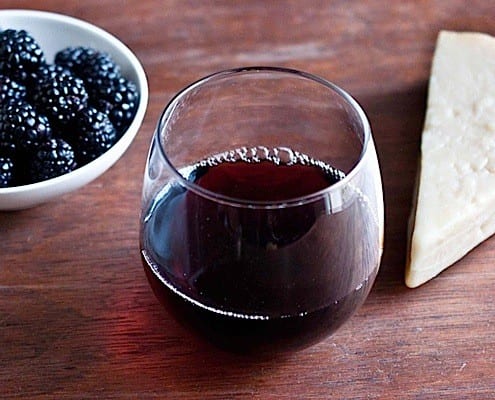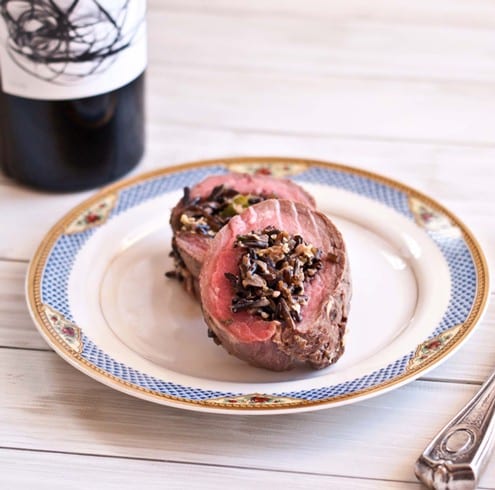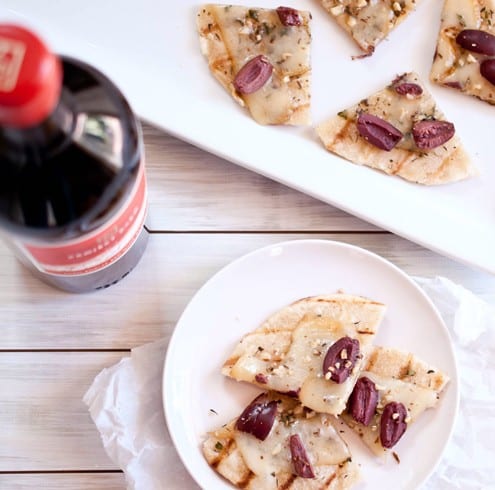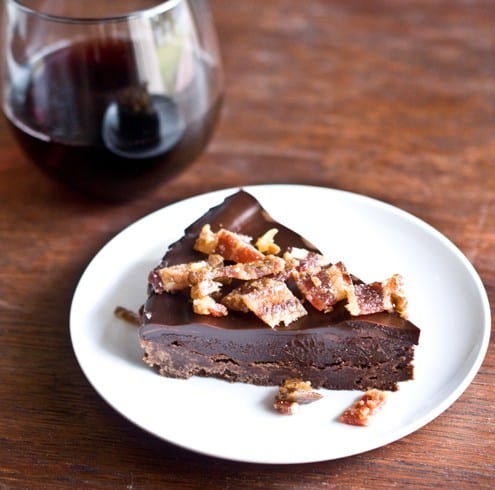Jackie Dodd is a California based food blogger who's passion…
A guide to getting more out of a meal by knowing the basic principles of food and wine pairing.
By Jackie Dodd
The general consensus among most wine drinking, food-loving humans is: “Drink what you like”.
True. For the most part, but viewing wine as an additional ingredient to your dish, knowing how the food and wine interact will give you more control of the experience of your meal.
You adore a dry cab, as well as super spicy red curry but what do they do to each other? Do you know how to pick a wine that can enhance your meal, rather than detract from it? Drink and eat what you like is always a good rule, but if you like several types of wine, knowing which one to pick can highlight that meal that you adore, and vice versa. Where do you even begin?
While there is certainly room for interpretation when it comes to taste and experience, knowing a few basic rules will have you on the path to pairing like a pro.
The Basic Principles of Successful Food and Wine Pairing
Rule one: Acid needs acid
Any food with a high acid level, something you just want to squeeze a lemon onto, is a perfect match for a high acid wine. If you are serving Chicken Picatta, or pasta with tomato sauce, opt for a Barolo, Sauvignon Blanc or Chianti. Serving a high acid wine with a meal like this, and you will bring out the citrus notes of your food. This is also a great rule to keep in mind if you are a red wine person, who wants to pair with an acidic pork or chicken dish. Choose a high acid, low tannin red for a nice Red Wine, White Meat pairing. Think that dish you made needs more acid? Serve with an acidic wine to increase the taste of the acid in the dish.
Rule Two: Tannins Need Fat
First of all, what IS a tannin? It’s the astringent component in red wine that give it structure. This is what can cause that bitter, pucker feeling in the back of your throat. This needs fat for balance, fat will soften the tannins and bring a smoother feel. Serve a bold Cabernet with a nice fatty piece of Prime Rib.
Rule Three: Fish Goes with Acid, Not With Tannins
We have all heard the old rule of: White Wine for White Meat, Red Wine for Red Meat. The reason for that is acid and tannins, not color. If you are serving fish, think of the wine as you would a squeeze of lemon on top (high acid wine) rather than a sprinkle of cheese (tannin heavy red wine).
Rule Four: Pair Wine With Dominant Flavor, Not Necessarily The Meat
This is another reason to ignore the old rule White for White, Red for Red. Just because you have pork on your plate, doesn’t mean that is the flavor that will stick around. Is that pork being served in a robust red sauce? Or is that beef being served with a creamy lemon sauce? If the sauce on your plate is the dominant flavor, pair to that, not the meat.
Rule Five: Heat Needs Sugar
This is the best example of wine paring going awry. Serving a super spicy dish with a high alcohol, tannin heavy wine with will set your guests on fire, two great elements producing a catastrophe combination when mixed. Alcohol intensifies the heat. If however, you cooked a dish that is much more mellow that you have intended, pair with one of those high tannin, high alcohol wines to crank up the heat. But, for the most part, you want to stick with a sweeter, low alcohol wine. Even if you don’t like sweeter wines, you will be surprised at how those sugars are altered with introduction of the heat. Try a Gewürztraminer or a Riesling.
Rule Six: Sweet Needs Sweeter
You want the wine to be sweeter than the dessert. Even if you are not drawn to the sweeter wines, taking a sip of a rich, sweet port before, and after, a bit of a dense fudgy cake completely transforms the flavors of both elements.
Now that we have this knowledge under our belts, where do we go from here? I’ve asked wine expert, Jameson Fink, to jump in and answer some wine paring basics.
1. Where pairing wine, where do you start, the food or the wine? Is it better to pair the food to the wine, or the other way around?
Honestly, it’s a toss-up. Whichever one inspires me more. If something catches my eye in the market, I’ll start building a dish around that and figure out the wine later. Or I may be tasting a new wine and the idea of what to pair it with will coalesce after the first few sips.
2. If you don’t know if your wine is acidic, oaky, tannin heavy, sweet, what should you do?
Ask for help. Whether you turn to the internet or talk to your friendly local wine shop employee, a little research or a few questions can get you pointed in the right direction.
3. What do you think is the biggest mistake beginners make when pairing wine?
I really don’t like to think about wine pairing “mistakes.” Some wines work better than others and you can just chalk up a less-than-desirable result to experience. It will certainly inform your next decision when you have the same dish! And maybe you’ll discover a pairing that YOU like, even though it flies in the face of conventional wine wisdom. I also advocate returning to the open bottle post-meal and enjoying it on its own or paired with a friend.
4. What are your thoughts on wine and cheese pairing?
My first experiences with wine and cheese began in a social setting, where the food and drink were just a vehicle to get people in a room together. It wasn’t about evaluating the wines and cheeses. And I have to admit that I haven’t been a huge fan of red wine with cheese. (Though this sentiment is probably a sad testament to some of the first red wines and cheeses I encountered together. There was nowhere to go but up.) I would, however, crawl over broken glass for Sancerre with goat cheese; I think too often there is a lack of white wine represented when people experience wine and cheese. With a match like Sancerre and goat cheese, the pleasures of pairing come from enjoying regional wines and cheeses that have a natural affinity. It’s a great theme for a wine and cheese party, too. But don’t be afraid to experiment and mix it up.
To learn more about wine, check out Jameson’s Blog: Wine Without Worry.
Jackie Dodd is a California based food blogger who's passion for local ingredients began during her years growing up on farm in Eastern Washington surrounded by apple orchards and peach trees. She is now happy to focus on California produce, and has a passion for baking. Along with her websites, www.domesticfits.com and www.thebeeroness.com, she also writes a column for the Glendale Examiner.










Great article! Thanks for the tips, I’ve also recently discovered that hard cider can make for a great alternative to wine if pairing with food. I wrote about some basics of cider pairing
here.
Great read with easy to understand info. Well done. Michele Winner, President international Food Wine & Travel Writers Assoc. .